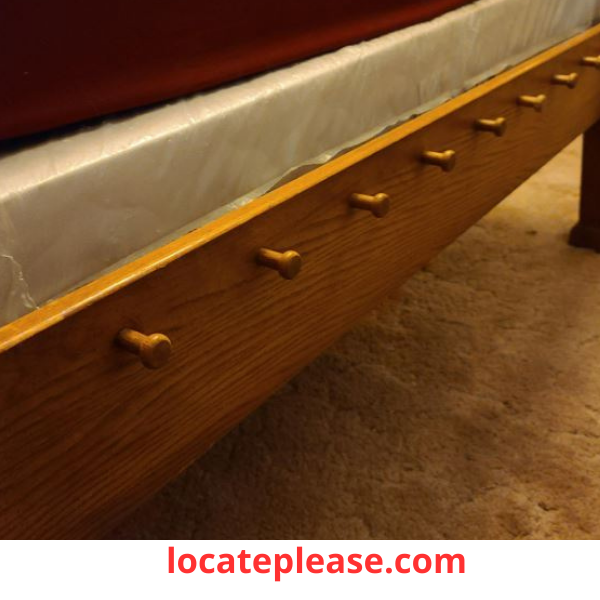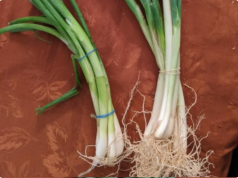Imagine this: it’s late, you’re exhausted, and instead of flopping onto a plush memory foam mattress, you find yourself face-to-face with… a rope bed. Yes, rope . Sleep tight, because it’s going to be an unusual experience.
This isn’t a scene from a history book or a medieval movie set—it’s how people slept for centuries before modern mattresses existed. And those mysterious pegs at the end of your antique bed? They’re not just decorative—they’re part of the ingenious design that kept these beds functional. Let’s dive into the fascinating world of rope beds and uncover the purpose behind those pegs.
The First Sleep Support Technology
Before coil springs, memory foam, or even box springs, there was the humble rope bed. These beds were simple yet effective: a sturdy wooden frame held together by a crisscross pattern of ropes, topped with a straw- or down-filled mattress. Basic? Absolutely. Smart? Also absolutely.
But here’s the catch: ropes stretch over time. After a few nights—or if someone decided to use the bed as a trampoline—you’d end up with something more akin to a hammock than a flat sleeping surface. Enter the wooden pegs. These clever tools were used to tighten the ropes, restoring the bed’s firmness and ensuring a good night’s sleep.
How Did It Work?
The process was straightforward but required some elbow grease. The wooden pegs fit into holes drilled into the bed frame. By turning the pegs (much like tightening a screw), users could crank the ropes back into place, pulling them taut across the frame. Once tightened, the bed was ready for another round of restful slumber.
This is where the phrase “sleep tight” originates. Before climbing under the covers, households would ensure their beds were properly tightened—a nightly ritual that became essential for comfort. If the ropes weren’t adjusted regularly, sleepers risked sinking into a sagging mess, which no one wanted after a long day’s work.
Daily Maintenance, DIY Style
In the days of rope beds, furniture wasn’t disposable. When something broke or wore out, you fixed it. If the ropes stretched too much, you didn’t toss the bed—you tightened it. This daily maintenance was simply part of life. People took pride in caring for their belongings, knowing how to repair and preserve them rather than replacing them outright.
It wasn’t about perfection; it was about practicality. A well-maintained rope bed could last for decades, handed down through generations as a cherished family heirloom. The craftsmanship involved meant these beds were built to endure, unlike today’s mass-produced pieces designed with planned obsolescence.
Made by Hands, Not Machines
Unlike modern beds churned out by factories, rope beds were crafted by skilled artisans—often local carpenters who also built furniture, fences, and other necessities. Each bed bore the mark of its maker, showcasing the care and attention that went into every detail.
Because these beds were handmade, they were also repairable. Broken ropes? Replace them. Worn pegs? Carve new ones. There was no need for warranties or customer service calls—just a little ingenuity and hard work. This ethos of sustainability and self-reliance is a stark contrast to our throwaway culture today.
A Glimpse Into History
Finding a rope bed in an antique shop feels like stumbling upon a relic from another era. At first glance, it might look more like a prop from a historical drama than a functional piece of furniture. But once you understand its mechanics, you can’t help but admire the simplicity and resourcefulness of its design.
Those nine pegs at the end of your bed aren’t just quirky features—they’re a testament to human creativity and resilience. They remind us of a time when comfort required effort, when possessions were valued, and when “sleeping tight” was more than just a saying—it was a way of life.
Final Thoughts
Next time you sink into your soft, springy mattress, take a moment to appreciate the evolution of sleep technology. From rope beds and wooden pegs to memory foam and adjustable bases, the journey has been remarkable. While we may never return to the days of tightening our beds each night, understanding the origins of these traditions gives us a deeper appreciation for the comforts we enjoy today.
So, whether you’re admiring an antique rope bed or tightening the screws on your IKEA frame, remember: good sleep has always been worth the effort. And who knows? Maybe those pegs will inspire you to embrace a little DIY spirit in your own home.
Sleep tight!










